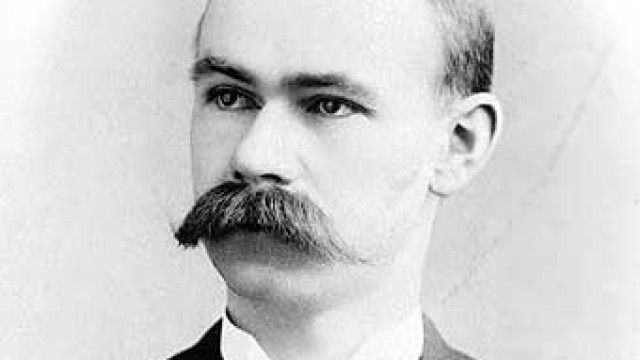
Herman Hollerith
1860  New York [USA]
† 1929
New York [USA]
† 1929
Herman Hollerith was a statistician who invented the punched-card tabulating machine.
He is considered the first computer scientist, that is, the first to achieve automatic data processing.
His invention of the punched-card tabulating machine marked the beginning of the era of automated data processing.
After graduating from Columbia University School of Mines, he worked for the National Census Bureau, where he worked as an assistant to his professor, William P. Trowbridge, working on statistical matters.
It was during this period that he developed a system conceived as an improvement to the census system, in which a paper tape punched the various data of the person being registered, which were then read by an electromechanical device.
Dr. John Shaw Billings assisted him in the conception of this invention and the subsequent tabulating machine, recommending that he study Joseph Marie Jacquard's looms.
During the 1880s, Hollerith promoted his invention at various institutions and dedicated himself to perfecting it.
In 1882, he entered the Massachusetts Institute of Technology, where he began teaching mechanical engineering and undertook his first experiments with punched cards.
These cards, patented in 1889, replaced the paper tape system he had previously invented. He later went to St. Louis, Missouri, where he attempted to design an electric brake system for railroads.
In 1889, Hollerith approached the United States government about a project to build a punch-card statistical machine, which was eventually developed and used to compute the 1890 census. This system, devised by Hollerith, is why he is recognized today as one of the pioneers in the processing and coding of large amounts of information.
On September 15, 1890, he married Lucia Beverly Talcott, with whom he would have six children: Lucia, Nannie, Virginia, Herman, Richard, and Charles. That same year, Hollerith was awarded the Elliott Cresson Medal by the Franklin Institute of Philadelphia for the best invention of the year.
For several years, Hollerith continued to introduce improvements and design new machines. In 1896, he founded the Tabulating Machine Company, dedicated to the manufacture and marketing of data-processing widgets. Hollerith sold his company to Charles R. Flint in 1910, although he continued to work as a consultant until 1921.
This company was renamed International Business Machines (IBM) in 1924 and, after World War II, became one of the leading companies in the computer industry.
For the 1900 census, Hollerith's tabulating machine was also used, but population growth and Hollerith's refusal to reduce his rates and salary turned many members of the government against him. In fact, for the 1910 census, the census superintendent, Simon Newton Dexter North, decided to dispense with Hollerith's services. Hollerith's patents for the tabulating machine seemed to make it unfeasible for the American government to build a similar widget. In any case, North and electrical engineer James Powers succeeded in developing a similar design that partially broke Hollerith's monopoly.
Hollerith later moved to Washington, DC, specifically to Georgetown, on a street where a commemorative plaque in his name, installed by IBM, now stands. In Washington, Hollerith died of a heart attack in 1929, at the age of 69.